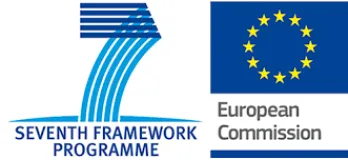HELM
Relevant project information
Dates
Project website
Role of CIRCE
Grant agreement number
Funded by

Description and objectives
The activities proposed in the HELM project to achieve the proposed objectives fall into four main groups:
- Technological development and research in the laboratory
- Design and demonstration of industrial prototypes
- Life Cycle Analysis and Risk Assessment
- Dissemination and Exploitation
These activities are focused on the study, design and development of:
- MW-CVI (Microwave and Chemical Vapor Infiltration) hybrid technologies for the manufacture of C/SiC and SiC/SiC composites.
- MW technologies for Liquid Infiltration of Silicon and Expanded Graphite.
- MW/RF technologies for pyrolysis and/or PIP processes.
As well as in the implementation of model strategy districts and new technologies for homogeneous heating of the components of ceramic materials, and for the monitoring of CMCs and GE in their growth process.
The project will carry out the technological scaling of these methodologies for their application in refractory materials, disc brakes, aerospace applications or foam production, among others.
The energy and exegetic impacts and production costs will be evaluated through Life Cycle Analysis, and a diagnosis and recommendations guide will be prepared on the development of demonstrations and laboratory tests at scale.
The project will undertake an innovative type of risk analysis related to both the characteristics sought in HELM materials and their characterization.
Finally, all partners will take part in the promotion, dissemination and exploitation of the results obtained in the project.
Value proposition
Advanced ceramic materials, such as non-oxide Ceramic Matrix Composites (CMCs) and Expanded Graphite (EG), represent the latest and most promising solutions for high temperature applications in manufacturing, transportation, and new demand electro-technological applications, such as energy harvesting.
It has been estimated that this market has enormous growth opportunities for this type of materials, however, its main shortcomings, such as high cost, difficulty of processing in its manufacture and reliability of the materials, must be overcome.
HELM will try to overcome these barriers by investigating advanced processing technologies based on High Frequency Electromagnetic Fields (EM) - Microwave and Radio Frequency (RF) - for the thermal treatment/processing of CMCs and expanded graphite, such as: Polymer Impregnation and Pyrolysis (PIP), Liquid Silicon Infiltration (LSI), Chemical Vapor Infiltration (CVI), and Graphite Exfoliation (GE) Thanks to the implementation of these technologies, it will be possible to achieve the following objectives:
- 60% reduction in manufacturing time, increasing production yield and reducing costs.
- 15-20% reduction in manufacturing costs, to increase competitiveness in the market.
- 50% reduction in energy consumption, promoting sustainable production while reducing costs associated with energy consumption.
- Achieving new microstructures that were not accessible through traditional technologies.
- Improving the technical performance of the new materials produced.
- Opening new markets by reducing the price of CMCs products, displacing conventional materials in their traditional fields of application and allowing the entry of new products.
Project partners
INSTM, WARRANT GROUP, STW, IMERYS, SCHUNK, CVT, TECNALIA, SUPSI, SAIREM, PETROCERAMICS, SAFRAN HERAKLES, FM, ERBICOL, ATL, AIRBUS GROUP, IPCF, CIRCE, BREMBO SGL GROUP, UNIVERSITAT D'ALACANT


